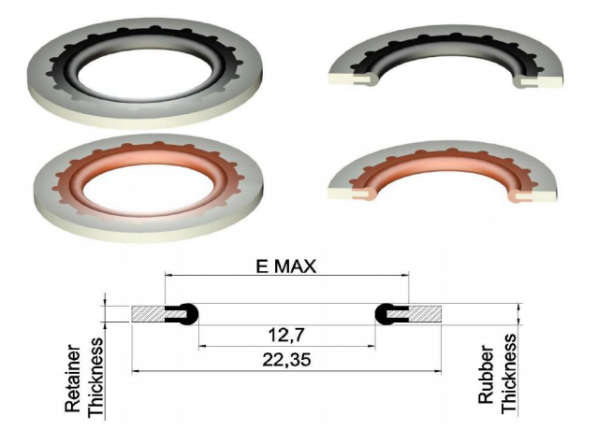Understanding Engine Crank Seal Functionality and Importance in Automotive Performance and Maintenance
Understanding the Importance of Engine Crank Seals
The engine crank seal, also known as the crankshaft seal, plays a vital role in the overall functioning of an internal combustion engine. This small yet crucial component is designed to prevent oil leaks and protect the engine from contaminations, contributing significantly to the longevity and performance of the vehicle.
What is an Engine Crank Seal?
The engine crank seal is located at both the front and rear ends of the crankshaft. It is typically made from durable materials such as rubber or elastomer, allowing it to withstand high temperatures and resist wear over time. The primary function of the crank seal is to ensure that the engine oil remains contained within the engine, preventing it from leaking out and maintaining optimal lubrication for the crankshaft and surrounding components.
The Function of Engine Crank Seals
One of the most critical functions of the engine crank seal is to provide a barrier against oil leakage. The crankshaft rotates within the engine, and as it does so, it creates pressure. If there are any imperfections or damage to the crank seal, oil can seep out. This not only leads to a decrease in the oil level, risking engine damage due to poor lubrication, but it can also result in a messy engine compartment and a potential hazard on the road.
Moreover, the crank seal protects the engine from external contaminants such as dust, dirt, and debris. These contaminants can affect the oil's purity, leading to increased wear on engine components. A well-functioning crank seal helps ensure that only clean oil circulates through the engine, thereby enhancing its efficiency and lifespan.
Signs of a Bad Crank Seal
engine crank seal

Over time, engine crank seals are susceptible to wear and tear. Several symptoms may indicate that your crank seal needs replacement. The most obvious sign is an oil leak around the crankshaft area. If you notice oil puddles under your vehicle or see oil misting on the engine, it may be time to inspect the seals.
Another indicator is the presence of an oil smell inside the cabin. When oil leaks and comes into contact with hot engine parts, it can produce a burning smell that permeates the vehicle's interior. Additionally, if you notice a decrease in engine performance or efficiency, it could be related to lubricating issues stemming from a malfunctioning crank seal.
Maintenance and Replacement
Regular maintenance is crucial to prolonging the life of engine crank seals. While these components are designed to last, factors such as extreme temperatures, engine vibrations, and exposure to oil contaminants can hasten wear and tear.
When replacing a faulty crank seal, it is essential to address the underlying causes of the failure. This might include inspecting the crankshaft for wear, ensuring that oil levels are maintained, and checking other components for signs of malfunction.
Conclusion
In summary, the engine crank seal is a small but significant component that plays an essential role in the health and performance of an internal combustion engine. Its primary functions include preventing oil leaks and protecting the engine from external contaminants. Regular maintenance and timely replacement are vital to ensuring that your vehicle remains in optimal condition. By understanding the importance of the engine crank seal and recognizing the signs of its failure, vehicle owners can take proactive steps to maintain their engines effectively and avoid costly repairs down the road.
-
Understanding the Importance of the Crankshaft Oil Seal in Engine Performance
News Jun.16,2025
-
The Unsung Heroes of Engine Protection: Understanding Automotive Shaft Seals and Oil Seals
News Jun.16,2025
-
Keeping the Engine Tight: The Role of Crankshaft Seals and Gaskets in Oil Control
News Jun.16,2025
-
Complete Protection in Harsh Conditions: A Deep Dive into Cassette Seals
News Jun.16,2025
-
Choosing the Right Oil Seal: A Guide to Trusted Brands and Suppliers
News Jun.16,2025
-
Advanced Sealing Technologies: Exploring the Range of Modern Oil Seals
News Jun.16,2025
-
Your Essential Guide to Car Repair Kits: From Rust to Dings
News Jun.13,2025
Products categories















